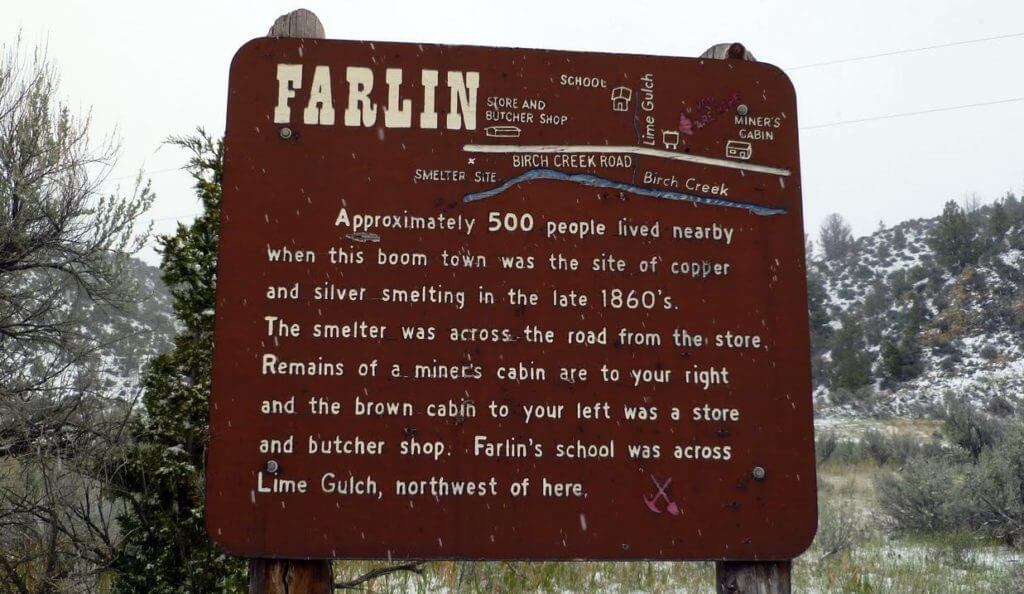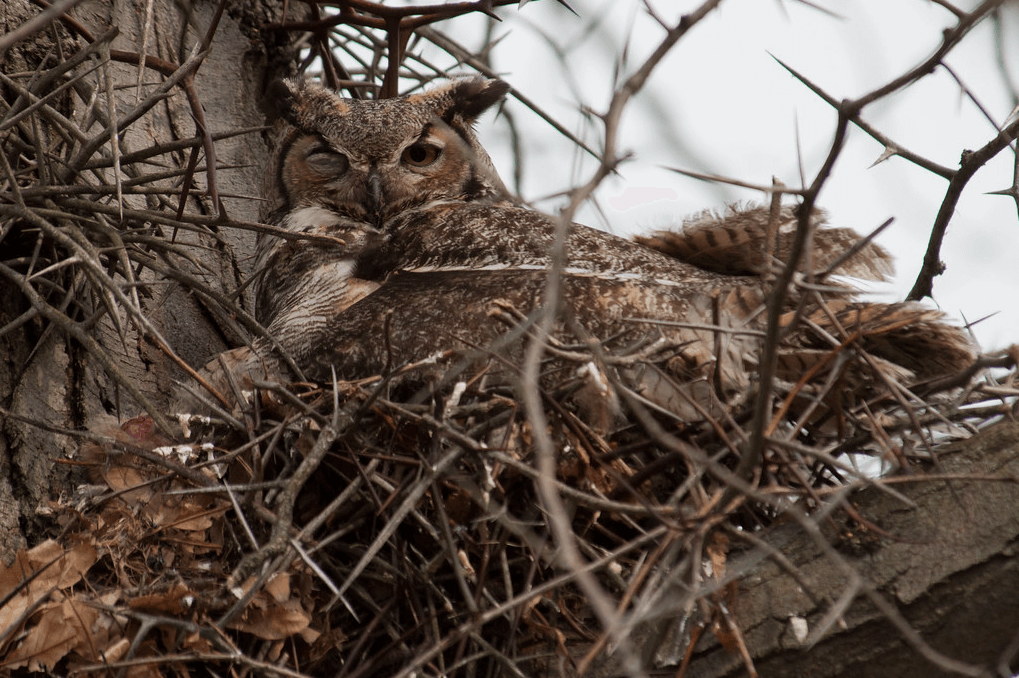The Geologic History of Farlin, Montana
by Rudy Molinek
Broadcast 7.9 & 7.14.2017 and 7.28 & 7.31.2020

Listen:
Last summer I was helping teach a geology field camp near Dillon. On our way back to the Birch Creek Outdoor Education Center each day, after long hours in the August sun spent identifying and mapping incredible exposures of rock, we would drive past a few crumbling cabins beneath an unweathered cliff face footed by large piles of scree.
This was once the town of Farlin – a long-abandoned copper mining camp at the base of the Pioneer Mountains. Shortly after the dawn of the 20th century, it was home to hundreds of men, women, and children. Inextricable from the experience of Montana, ghost towns like this one now dot the landscape they once extracted.
The long saga of Farlin began about 300 million years ago, during a period of “ancient life” known as the Paleozoic Era, when aquatic invertebrate fauna first exploded onto the scene of planetary life. As life continued its inexorable march forward, the tectonic plates were slowly coalescing into the supercontinent Pangaea. North America made up much of the western margin of this supercontinent, and western Montana was under a shallow continental ocean. In this calm environment, microscopic invertebrates – called foraminifera – and other ocean dwellers formed shells of calcium carbonate. When their inhabitants died, these skeletons sank to the ocean bottom, and were eventually cemented together to form limestone.
Over the next 150 million years many more layers of limestone, sandstone, and mudstone were deposited, until this peaceful period met a jarring end about 100 million years ago, when the earth’s crust under the Pacific Ocean collided with the North American continent, causing the western edge of the continent to buckle and thicken, forming a kind of proto-Rocky Mountains that extended from Mexico to Alaska and through Montana.
Meanwhile, hot molten rock from deep below the Earth’s surface was ballooning up into the brittle upper crust. One molten granite “balloon” was injected into the growing Pioneer Mountains. The heat and hydrothermal systems from this magma “cooked” surrounding sedimentary rocks – altering their fundamental chemical structure.
One of the rock units “cooked” by this magma intrusion was the limestone of Farlin. This nearly pure calcium carbonate limestone contained small amounts of sulfur, which readily dissolved into the metal-rich hydrothermal fluids that pulsed and cycled around the hot granitic melt. In turn, this sulfur bonded to metals in the volcanic fluid like copper, iron, and lead, and formed crystalline veins enriched in minerals like pyrite (‘fool’s gold’), native copper, azurite, and malachite. This occurred across the entire western United States, producing lodes of copper, silver, and gold.
Over the last 50 million years, Farlin’s copper was brought progressively closer to the surface as the dramatic collision of the Pacific crust with North America ceased and the Earth’s crust across southwestern Montana began to stretch and thin. At the same time, glaciers, rain, and rivers eroded the peaks of the Pioneer Mountains, which were high above the oceans. The combination of stretching, erosion, and time slowly brought Farlin’s copper closer and closer to the surface, eventually becoming accessible to extraction for satisfying the electric age’s demand for wiring. These processes are still underway today: the massive 1959 Hebgen Lake and 1983 Borah Peak earthquakes were the result of that same crustal stretching, and rivers and creeks that drain out of the mountains still carry the eroded material of high peaks.
It is easy to think of ourselves as removed from geologic processes – after all, what’s a human lifetime compared to millions or billions of years? We live in a static moment compared to the vast dynamics of deep geologic time. But all of human, environmental, and natural history is part of a timeline stretching back unimaginable lengths. In Montana, the crumbling remains of a 115-year-old mine can still conjure those memories.
Every week since 1991, Field Notes has inquired about Montana’s natural history. Field Notes are written by naturalists, students, and listeners about the puzzle-tree bark, eagle talons, woolly aphids, and giant puffballs of Western, Central and Southwestern Montana and aired weekly on Montana Public Radio.
Click here to read and listen to more Field Notes. Field Notes is available as a podcast! Subscribe on iTunes, Google Play, or wherever you listen to podcasts.
Interested in writing a Field Note? Contact Allison De Jong, Field Notes editor, at adejong [at] montananaturalist [dot] org or 406.327.0405.
Want to learn more about our programs as well as fun natural history facts and seasonal phenology? Sign up for our e-newsletter! You can also become a member and get discounts on our programs as well as free reciprocal admission to 300+ science centers in North America!












